#{Title}
#{Copy}

Architect director Steve Marshall looks at buildings designed as envelopes for infrastructure and finds unique solutions result from creative design with uncompromising functionality to produce beauty in utility.
Buildings designed as envelopes for vital infrastructure components are often extremely large structures which can have significant environmental impact. For most building types the design team is led by the architect and supported by the engineering professions. However, when the primary function is an engineering process, the dynamic can be entirely different.
Two recent projects demonstrate in very different ways how architects can make significant and positive contributions to the end result when working in close collaboration with those who understand the technical processes involved. In each case, architects worked alongside specialist engineers in order to understand the complex processes involved. Two unique solutions resulted from the application of creative design thought without compromising functionality, each inspired by its location and demonstrating that there can be beauty in utility.
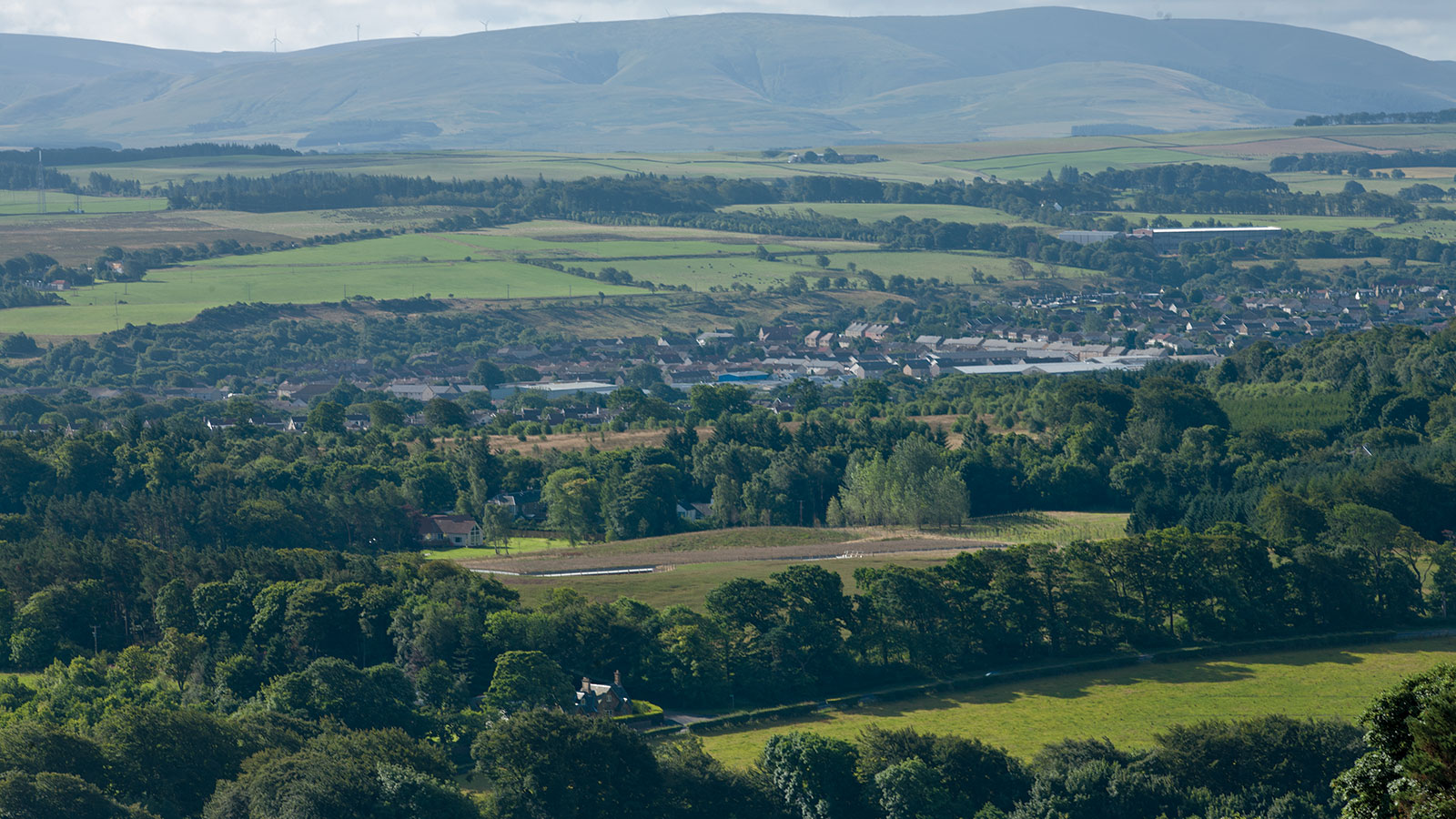
Edinburgh Drinking Water, Glencorse, Scotland
The Edinburgh Drinking Water Project is perched high in the Pentland Hills above the city. It supplies 175 million litres of high quality drinking water daily to 500,000 customers in Edinburgh and Midlothian, satisfying their fresh drinking water needs into the foreseeable future. The £130m facility builds on the proud legacy of the previous Victorian system creating an efficient, sensitive and sustainable solution. The primary challenge was to design a very large container for the facilities and associated water storage tanks within the Pentland Hills Regional Park, a place of significant natural beauty and public amenity. Ordinarily these would be housed in utilitarian industrial buildings. However for this flagship project the entire design team worked together to produce a model for the future rather than a repeat of the past.
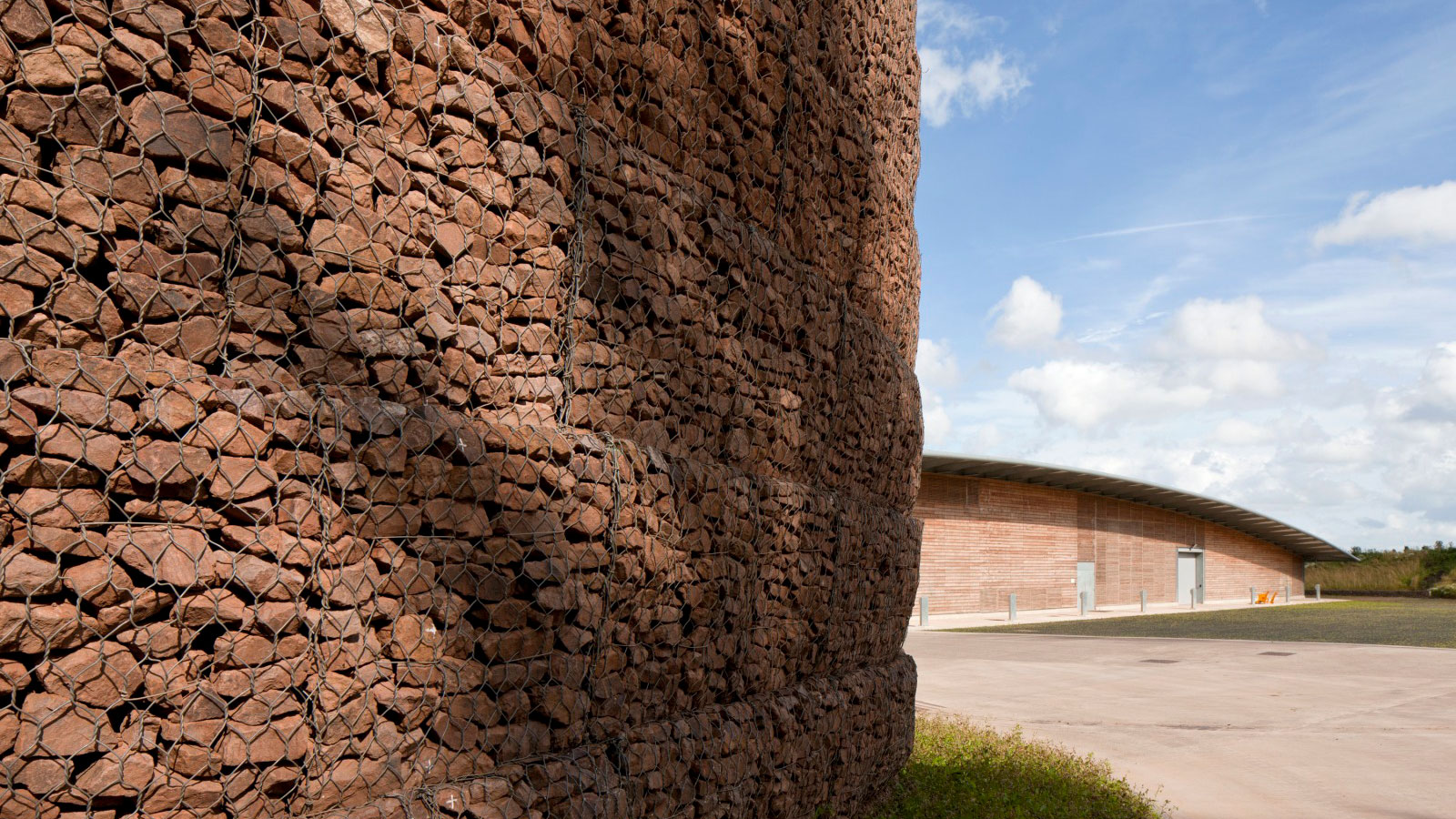
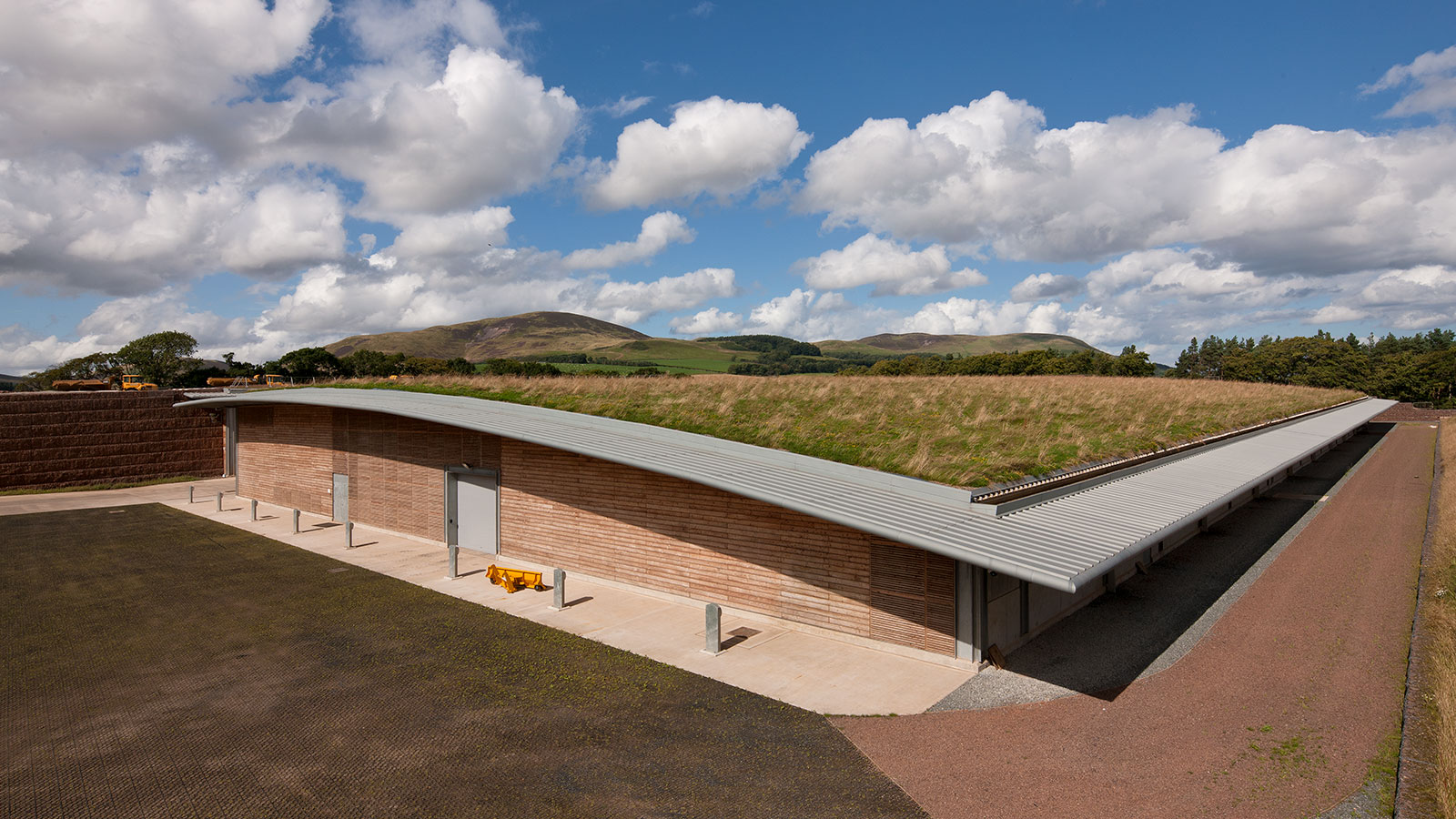
Edinburgh Drinking Water, Glencorse, Scotland
A ‘ground-hugger’ building was proposed, embedded in the landscape and almost entirely concealed beneath Scotland’s largest green roof. Excavated material was reused and a locally prepared green roof using indigenous meadow species acts as a living “cloak” above the buildings and storage tanks. The facility generates much of its own power and encourages biodiversity through surrounding drainage wetlands.
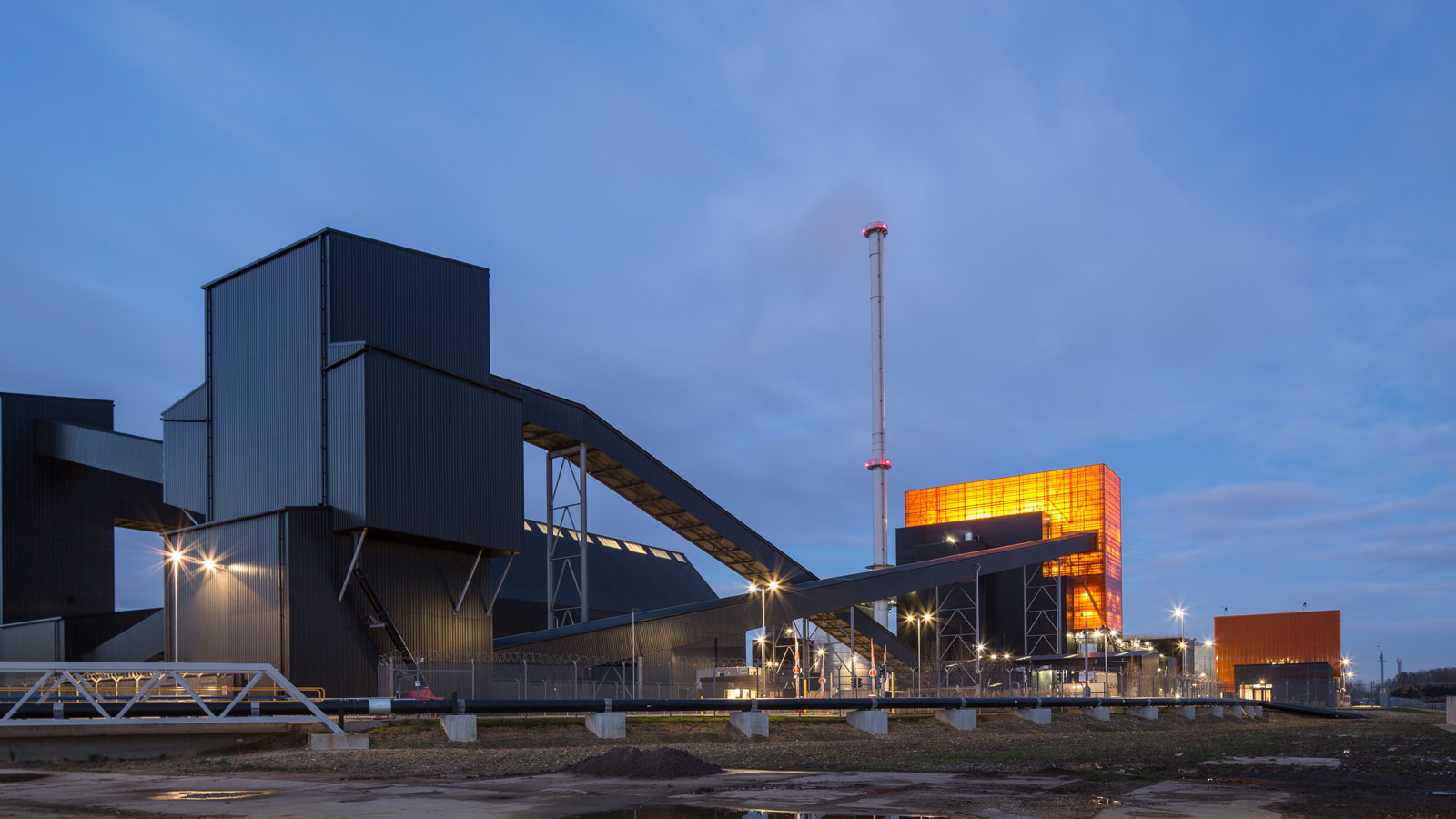
Blackburn Meadows Biomass Plant, Sheffield
Blackburn Meadows is a biomass power plant adjacent to the M1 in Sheffield. A shining example of its kind, it provides clean and sustainable energy whilst creating local employment and a striking new landmark structure for the area. The plant increases EON’s mix of generation assets and helps to ensure future security of supply for the UK. Generating 30MW daily by converting locally sourced recycled wood, it powers 40,000 homes displacing the emissions of around 80,000 tonnes of CO2 per year. It also includes a £20m low-carbon district heating network.
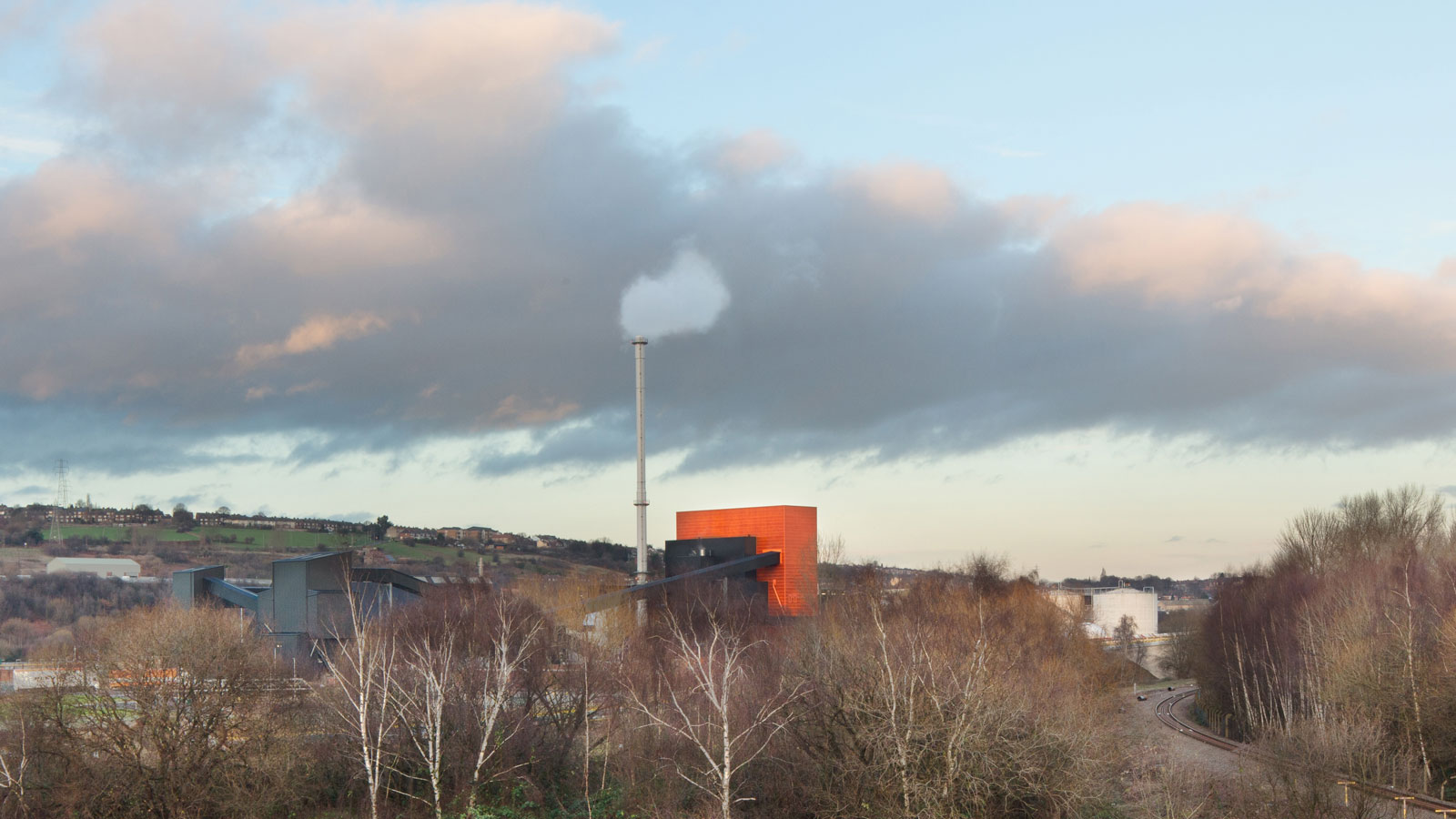
Blackburn Meadows Biomass Plant, Sheffield
Having worked alongside EON’s process engineers, BDP proposed an industrial approach referencing the vernacular of the Lower Don Valley. Clad in profiled black steel, the building forms are determined by their function and reflect their operation. The focal point is the boiler house, expressing its role at the heart of the energy-making process. Clad inexpensively in orange polycarbonate to raise its visual prominence, the boiler house is dramatically transformed at night when illuminated internally.
The striking architecture means that already the plant is a local landmark and, as such, people who work at the site take pride in being a part of something which is well known. The wild flower meadows are starting to bloom and reeds are growing in the swales. Already these areas are attracting wildlife including rare bird species, rabbits and stoats.
Luke Ellis plant manager at Blackburn Meadows Biomass
Blackburn Meadows has become a distinctive new landmark on the M1, described beyond functionality as a ‘beautiful machine’. Furthermore, it combines reliability and efficiency with excellent value for money.